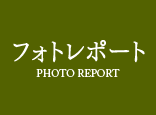| Date and time | Saturday, November 10 10: 00-12: 00, 13: 30-15: 30 |
| Venue | Takenaka Carpentry Tools Museum special venue |
| Instructor | Mr. Takeo Honjo (Kamisurishiri from Kyoto) |
| Cooperation | Maruni Co., Ltd. |
On a pleasant autumn Saturday, a workshop "Let's Make Postcards with Karagami" was held. On the day of the event, approximately 70 customers participated. Instructor is Takeo Honjo, a leading kamisuri master from Kyoto, Fujio Ishida of Maruni Co., Ltd., and Yuji Kudo of the company's surier.
 |
I created a postcard using Maruji's special "karakami kit", which reproduces Karagami's methods, materials, and tools as realistic as possible. Although it was a miniature, it seemed that you could fully enjoy the techniques of Karagami, such as using the same magnolia tree as the real wood and the mica (Kira) that actually uses paint.
In addition, on the day, I was able to bring the woodblock that Mr. Honjo actually used for work and experience the actual Karagami brushing. The pattern of the woodblock used on the day is said to have been carved about 150 years ago with "Ume no Maru" and "Fujifusecho", which are also used in the Kyoto Imperial Palace.
 |
First of all, Mr. Honjo's demonstration. Instead of applying paint directly to the woodblock with a brush, the paint is put on using a sieve. The paint is a mixture of mica, chalk, pigment, and adhesives such as lane, princess glue, glue, and resin. The sieve is a unique tool of Karagami, which is made of gauze on a frame wrapped with elongated thin boards such as cedar.
 |
Next, stroke and rub it up like a circle with the palm of your hand directly. By stroking by hand without using valain, a unique elegant taste of Karagami is created.
 |
Turn the paper once rubbed, put the sieve paint again on the woodblock and print it twice. By printing twice in this way, it will create a more plump texture and a warm texture. When printing large paper such as sliding doors, we use the same size as the woodblock used this time. If you go crazy even a little, the pattern will be cut or overlapped and it will not become a work, so you will need skilled skills.
 |
Not only adults but also many children participated in the workshop. First-year elementary school children also took on the challenge of printing Karagami for the first time.
 |
I was able to lift it up well. He seemed to be very concerned about Karagami, and he continued to work hard on making postcards.
A participant said, "I learned for the first time that I put on paint twice. It was difficult to keep it out." "I was surprised at the technique of sliding the seams so that I could not understand the seams at all." I was able to touch the production of Karagami, which I rarely see, and the participants seemed to have enjoyed it very much. Thank you very much to Mr. Honjo and Mr. Maruni for your cooperation.
The workshop "Let's Make Postcards with Karagami" is scheduled to be held at the Nagoya venue (December 2), so please join us. For more information, please visit the following website.
 |

